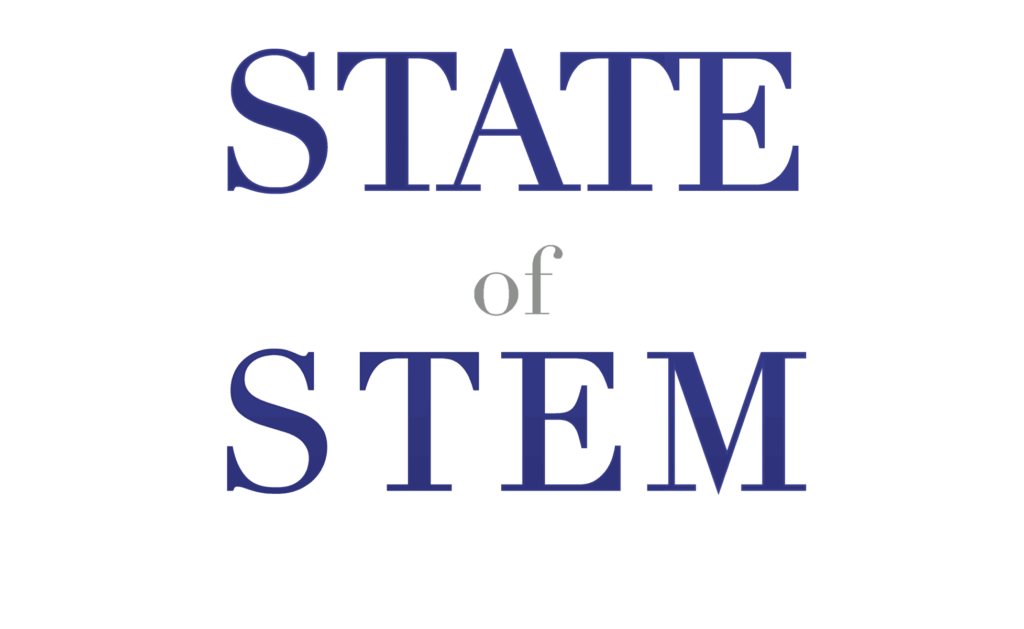This spring, STEMconnector will be publishing a new research report called The State of STEM: a comprehensive, fact-based understanding of the STEM system along with new insights into the trends and challenges around STEM and strategic direction for investments. State of STEM is the first big undertaking for STEMconnector’s newly-hired and first-ever Senior Director of Product Development and Research, Erin White. We sat down with Erin to learn more about her background, her passion for research, and the goals for the State of STEM report!
 STEMconnector: Tell us about your background and how you ended up at STEMconnector?
STEMconnector: Tell us about your background and how you ended up at STEMconnector?
Erin White: I am passionate about solving complex social problems alongside communities, organizations, and systems. To do so, we must to work across sectors towards a common goal – to me, that’s what STEMconnector is all about.
Prior to STEMconnector, I served as a Senior Director at America’s Promise Alliance, the nation’s largest network of organizations focused on improving the lives of young people. As that organization approached its 20th anniversary, I helped them step back and look at all the changes that have impacted children and youth in the last two decades, speaking with over 200 people from parents and youth to nonprofit and corporate leaders. This led me to write Our Work: A Framework for Accelerating Progress for Children and Youth in America. Through that research, I became interested in issues around workforce development, economic mobility, and the nature of the American Dream, not just for young people but for all citizens.
When I learned that STEMconnector was looking to build out its research and product development function and continue to innovate on ways to bring together industry and education and non-profits, I knew I wanted to join the team to drive both social impact and business value.
SC: How did the idea for State of STEM originate?
EW: I was speaking with our CEO, Leslie Cruz, about our overall research agenda and how we could best deliver value to our member and the fields. We realized that we are at a pivotal point in STEM. The National Science Foundation coined the term STEM almost 20 years ago, and since then there has been an explosion of interest, investment, and programmatic work in this space. Our national workforce conversation is flooded with perspectives on everything from labor force participation to the value of college to the impact of automation. We thought it was an apt time to take a broad look at this range of issues and actors involved in STEM today, create a robust system map, and point to some areas for our collective focus as a field.
SC: You aren’t a scientist, or a mathematician, or an engineer… so what makes you excited about STEM?
EW: Well, I am a (social) scientist. And I happen to be married to a physicist. However, I’d say my overarching interest in STEM is how it really brings together so many of the stickiest social challenges around education, economic development, and opportunity, as well as the most exciting innovations in technology and industry. I think what’s being validated for me through this research is that STEM is not just the four disciplines represented by the acronym, but rather an approach to thinking critically and analytically, that is foundational to so much of modern learning and working.
SC: What’s the most surprising thing you’ve learned so far in this research?
EW: Frankly, the most surprising thing is there is not a single clear definition of the STEM talent gap. And it is not productive to try to get to just one definition. I hypothesize that there are several different types of gaps covering everything from postsecondary access to geographic opportunity. If we are going to close these gaps, not just continue to discuss them, we must enhance our understanding and commit to adjusting our practices and programs accordingly.
SC: How do you think the State of STEM will become more than just another report on a shelf?
EW: Well, I’ve never thought of myself as a researcher. I think of myself first as someone who works in public service to solve problems. For me, research is something that should absolutely be put into action, something that translates to how organizations and individuals do their jobs and make their decisions.
State of STEM will serve as a framework to point STEMconnector toward future research projects as well as initiatives, events, and learning for our members. For example, we are validating through this research the growth of middle skills jobs- those that require something beyond high school but not necessarily a 4-year degree. Yet it’s challenging for companies to bring their talent acquisition strategies to scale across 2-year institutions. This is an area where every stakeholder is working towards the same outcome- community colleges are eager to support their students in obtaining great jobs, and corporations need to fill those jobs. Via the STEMconnector Postsecondary Pathways Innovation Lab, we are working to bring together those stakeholders to explore ways to enhance and scale the recruitment process.
For more information on #TheStateOfSTEM, head to the landing page here: https://www.stemconnector.com/publication/state-of-stem/.
And check out the rest of STEMconnector’s Publications and Resources too!
